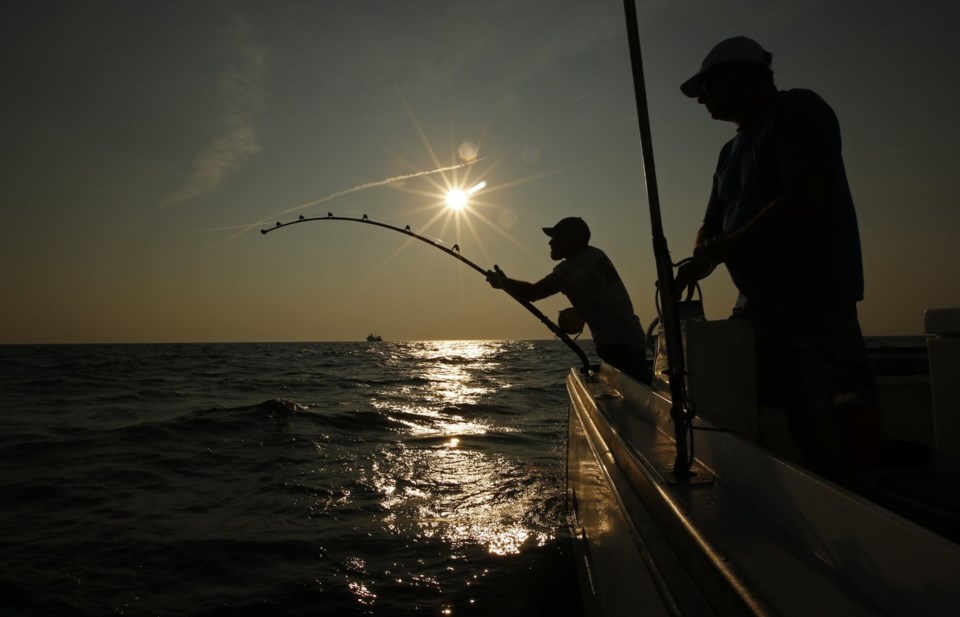HALIFAX — An environmental group says Nova Scotia’s commercial swordfish fleet could generate millions in added revenue by bringing tourists along for fishing trips and using different gear.
The Ecology Action Centre says swordfish harpooning — lunging a long spear into the water to catch a fish — has become increasingly difficult and less economically viable because swordfish are appearing less often at the surface due to changing water conditions.
In a report released Wednesday, the centre says changing ocean conditions are preventing fishers who use the traditional fishing method from fulfilling their already small swordfish quotas.
The group's solution is for the harpoon fleet to start using a single deepwater hook and line — called rod and reel gear — and to charge tourists to come aboard for a "once-in-a-lifetime experience."
Dale Richardson, president of the Nova Scotia Swordfish Harpoon Quota Society and a fisher in the harpoon fishery for over 20 years, said rising ocean temperatures mean swordfish come to the surface less often to bask in the sunlight and regulate their body temperatures.
He said the addition of deepwater hook and line fishing is a “win-win” to boost earnings in the fishery and help it bounce back from “disheartening” catch levels. Although there are 184 licensed harpoon fishers in the Maritimes region, Richardson said only about 10 to 15 of them are currently active because of the poor catching conditions.
Richardson said one harpoon trip requires at least eight hours offshore, and can often extend to five or six days. “When you’re only catching one, two, or three fish, it becomes not very feasible,” he said.
The Ecology Action Centre is calling on the Department of Fisheries and Oceans and Transport Canada — which regulates commercial passenger transportation — to allow licence holders in the harpoon fishery to use rod and reel gear and to start offering sport fishing trips.
Holly Isnor, the group's marine campaign co-ordinator, said combining commercial and sport fishing for swordfish is more complicated than for the bluefin tuna fishery, which uses smaller boats and stays closer to shore. But she said surveys completed by her group show clear support for developing a charter fishery.
“Fishers want to be out there fishing. In many cases, this is something that their families have done for multiple generations,” Isnor said. “Our goal is to see this fishery thrive.”
The centre estimates a licence-holder could generate $61,000 a year in revenue by offering three five-day fishing trips to two passengers per season. In total, the tourist activity could bring in $2.5 million a year if just one-quarter of licensed fishers operated charters, it says.
In Nova Scotia, swordfishing dates to the early 1900s when handheld harpoons were the most common method of catching fish.
The Department of Fisheries and Oceans allocates 10 per cent — or 138.4 tonnes— of Canada’s swordfish catches per year to harpoon fishers, while the other 90 per cent is caught with longlines.
Swordfish are found in Canadian waters from spring to fall, most often near the edge of the Scotian Shelf off Nova Scotia's South Shore and the Grand Banks of Newfoundland.
This report by The Canadian Press was first published Aug. 7, 2024.
Cassidy McMackon, The Canadian Press

